When you plan your kitchen lighting, kick plates are not the details you usually think about. However, if you’re looking beyond functionality and seeking ways to add some ambience to a room, kickboard lights (or plinth lights) are precisely what you should direct your attention to.
In the case of kitchen decor, people tend to aim for the perfect task lighting for food preparation and other activities that require precision. Of course, it is absolutely vital and should remain a priority, but this kind of lighting tends to be very bright, focused and not at all atmospheric.
And that’s where plinth lighting can make a difference – it is excellent for setting the cosy, even romantic mood in all spaces. So if you like to spend your time in the kitchen not only on food preparation, or your cooking and dining area are in the same room, this is definitely an option to consider.
Because of their versatility and mood-setting abilities, plinth lighting is also often chosen for bathrooms and bedrooms. As long as you have some plinths, kickboards, or other flat surfaces, you can install them basically everywhere.
In this article, you will find all the necessary information on the topic. Hopefully, they will help you make the right decision.
What Are Plinth Lights?
Plinth lights, just like their names suggest, are the lights you install into a plinth or a kickboard, but they will fit perfectly into any flat surface, as long as you have a well-thought plan for them. They cast a slight, a bit bright but subtle light, which makes them perfect for the mood lighting, especially if you choose the bulbs with the right colour temperature and power. They can be both practical (being unobtrusive and used to illuminate steps and routes), and stylish (lighting up surfaces in an elegant way, adding a little drama to your indoors). That’s why bathroom and kitchen plinth lights are rising in popularity these days.
How Do You Put Lights on a Kickboard?
You will be happy to learn that it’s relatively easy to install lights on your plinth or a kickboard. As long as you follow specific guidelines, you can do it all on your own and save money on hiring a professional, or ask only for a consultation.
It’s evident that in the case of installing any kind of lighting, it’s best to have at least some basic knowledge about manual work and electricity. You can do it either in your house while renovating, which is recommended, considering that it may involve quite a lot of mess. But if you have already arranged the whole room, you can also remove the kickboards carefully from the cabinets and move the work to a place where you won’t mind making a little mess.
For the successful installation, you will need a proper work stand, a level, a drill (a basic drill driver will be fine), a tarp for any dust or rubble, and a plug to plug your lights in. It’s better when a plug is installed lower down so that the wiring can simply reach it along the wall, with fewer adjustments needed for rearranging the cables.
To begin, mark the spots for the lights on your kickboard. Make sure you measured the distance right and that the lights will be evenly placed. Then you can start drilling; the drill can’t be too wide nor too narrow for the lights to fit well and not to fall out. Once you’ve drilled the holes, you may start pulling your lights through them, one by one. It’s good to untangle the lighting before you even begin the work, as it will reduce the mess. Be sure you don’t leave any wires hanging loosely.
The easiest way to connect the lights to the plug is the junction. There are multiple types of connections to choose from, depending on your needs and preferences. You can also install some additional features, such as a timer to allow your lights to turn on and off when needed (it’s recommended if you use plinth lighting for illuminating the steps or a route.
When you’re refitting the kickboard, make sure all the wires are in place, whether you’re drilling or glueing it.
How Far Apart Should Plinth Lights Be?
The most common mistake when it comes to installing plinth lights concerns the spacing. The lights need to be placed evenly and with the right distance between each other to provide the desired effect. You don’t want any dark spots between them, but you also don’t want to overpower an area.
When it comes to plinths, it is often recommended to place one light in the centre of all cabinets, cupboard doors, kitchen plinths, or drawers. However, if these are not even in your kitchen, you should instead opt for 400-500mm spaces.
Of course, these are only some general rules, and everything will depend on the layout of your kitchen; there may be some natural darker spots or areas without the need for illumination. The rule of thumb, though, is to make it as even as possible. Any other lighting placement will distract or even irritate you.
How Do You Fit Plinth Strip Lights?
Strip lights are an excellent option for kitchen plinth lighting as well, but you need to make sure you have the right measurements. It’s crucial that the strip is of the right length and width.
When you buy strip lights, you can ask a producer or a store to cut it for you; you only need to provide them with the exact measurements.
However, you can easily do it on your own, as you can cut strip lights with regular scissors, as long as they are sharp enough. And watch out, as some strips, especially the LEDs, can only be cut along the marked lines.
Are Plinth Lights Cost-Efficient?
All lights can be both energy and cost-efficient if you switch to the right bulbs. When it comes to plinth lights, it is recommended to choose LED lights, as they are not only better for the environment and your wallet, but they also cast the light of the right colour temperature and brightness. It’s not a coincidence that LED plinth lights are very often chosen for such places as bars, hotels or night clubs, because they are perfect for the atmospheric lighting.
Conclusion
Plinth lighting is an excellent choice for every room where you want to add some ambience. It may bring functionality and the aesthetic benefits to your spaces – either or both. Whatever you need, kick plate lights should not be dismissed. They are versatile, elegant and subtle, so no matter the decor of your house, they will probably suit it well. And given how easy they are to install, they are worth at least considering.


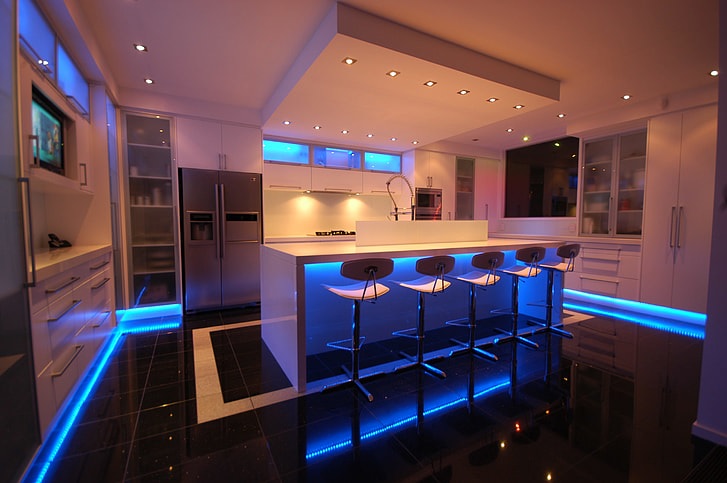
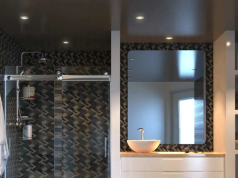
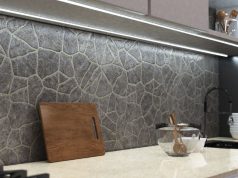
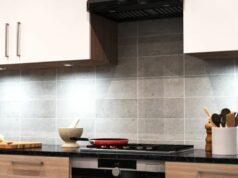
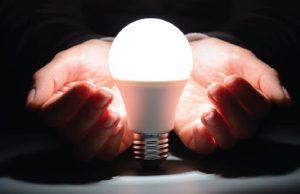







All agreed, but like all other articles I’ve seen regarding this kind of lighting, the problem of the dishwasher door opening still remains….resulting in a loss of continuity.
Hi Tim,
Yes, your right. When there is a dishwasher it makes using LED Strip impossible.
So, a good idea is to use plinth lights instead.
https://www.simplelighting.co.uk/indoor-lighting/plinth-lights/
If you have an integrated dishwasher, you will still have a plinth below it. So you can install these into it.
Not at all,
simply cut the plinth down to height at the dishwasher door as normal. Glue a length of 12mm PVC angle to the plinth face level with the top of the notched plinth Providing a lowered horizontal to stick the led strip to.
Lastly run the led strip under the cabinets bringing it along the underside of the PVC angle then back up to the cabinets after the dishwasher.
Simples